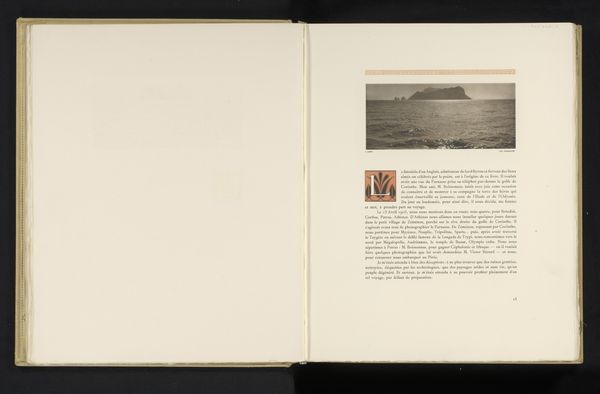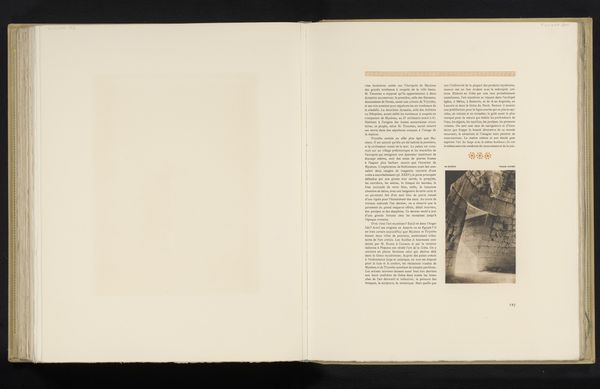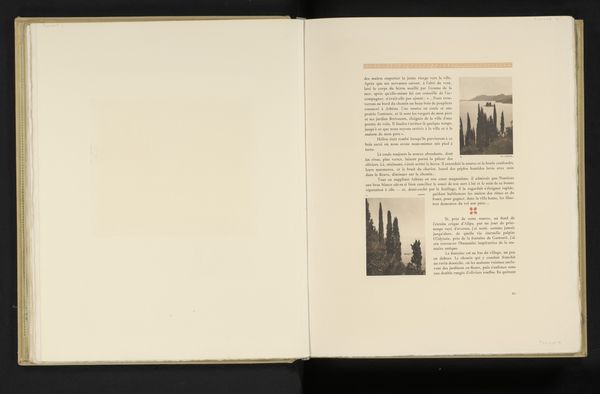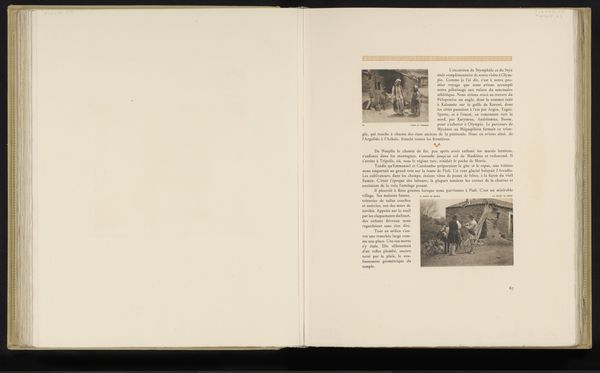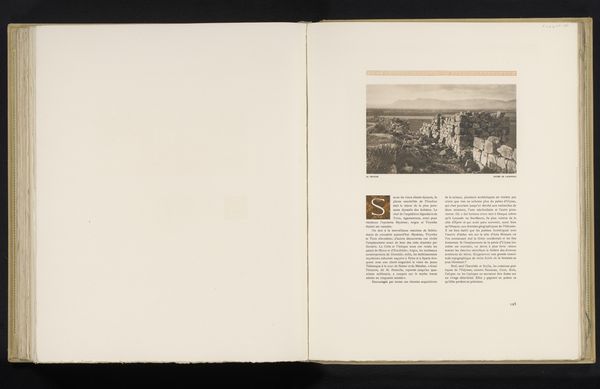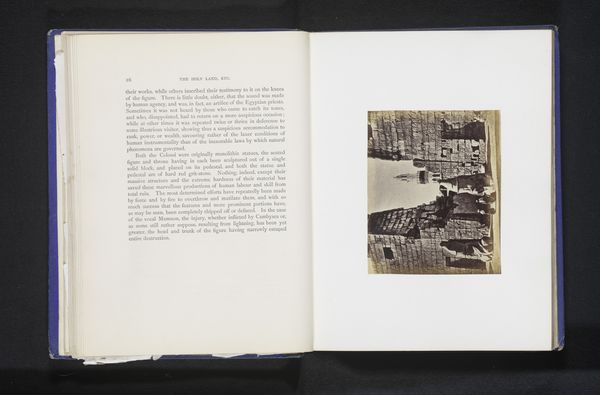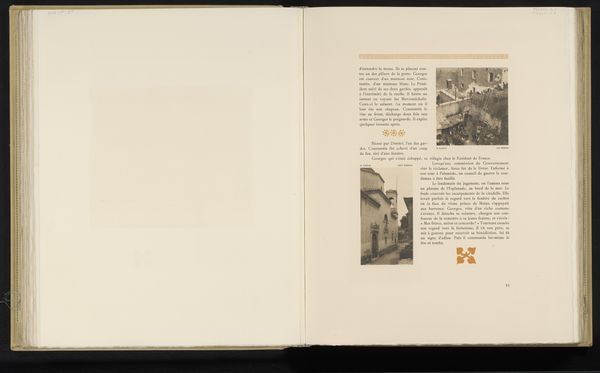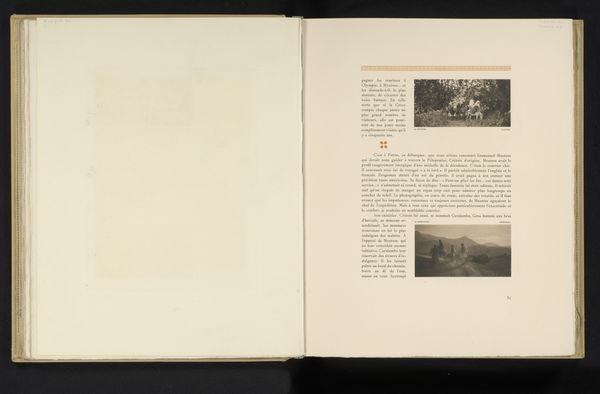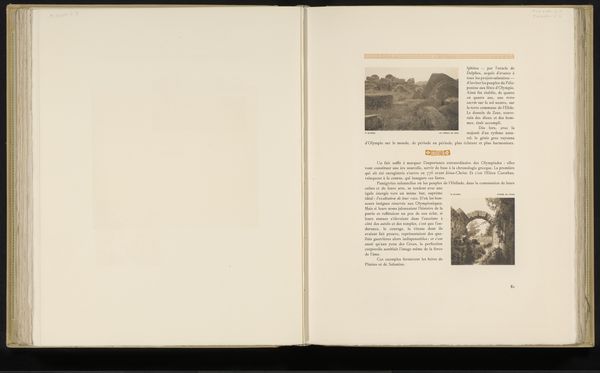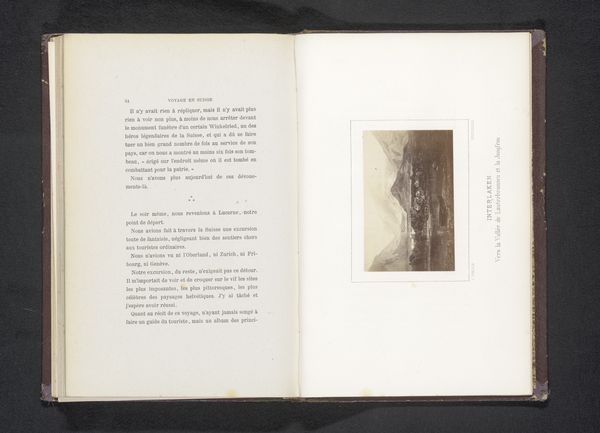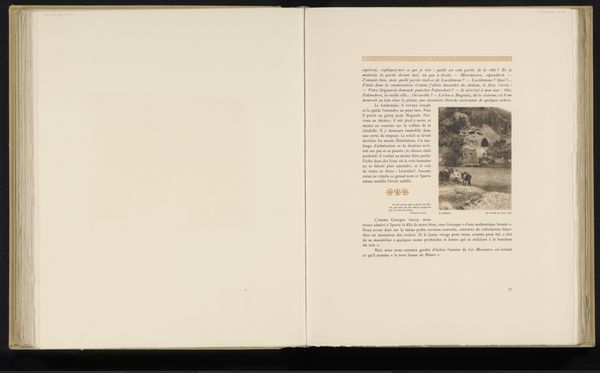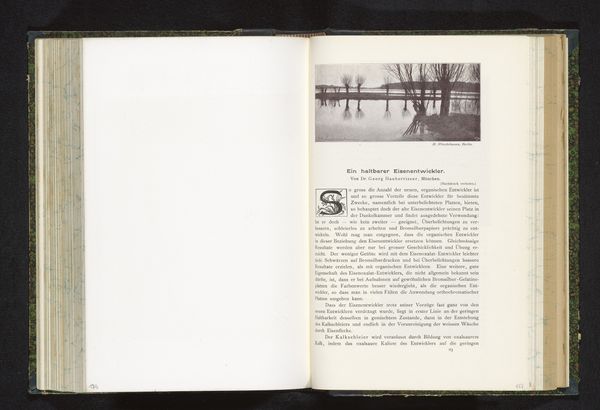
print, paper, photography
# print
#
landscape
#
paper
#
photography
#
ancient-mediterranean
Dimensions: height 80 mm, width 225 mm
Copyright: Rijks Museum: Open Domain
Editor: So, here we have Fréderic Boissonnas’s “Gezicht op de Tholos in het heiligdom van Athena Pronaia," a photographic print from before 1910, reproduced on paper within a book. It seems to capture this serene, yet slightly melancholic, scene of ancient ruins. How would you approach understanding this photograph? Curator: I think focusing on the means of production is crucial here. Boissonnas was part of a commercial studio, producing images for a growing tourism market. How does this context affect our perception of this photograph? Is it an objective record, or a carefully constructed image designed to appeal to a certain clientele and perpetuate a particular vision of ancient Greece? Think about the labor involved, the material cost of producing and distributing these images at the time. Editor: That's interesting, so you’re saying that its commercial purpose shaped its aesthetic qualities? The printmaking, the paper…these aren't neutral. Curator: Exactly. The material process influenced what was ultimately captured and presented. Photography was a relatively new technology at this point. How did it help commodify ancient Greek history? What kind of access did it offer the growing middle class? Editor: I see, by focusing on its production we're unveiling the economic and social forces shaping our view of history, making what looks ancient very modern. I’d always considered photography a 'neutral' depiction of something. It has given me another viewpoint for it. Curator: Precisely. Examining the materials and their circulation provides a more grounded understanding. And think, who owned these photographs? How did they display and consume them? The afterlife of this image continues to shape our understanding today.
Comments
No comments
Be the first to comment and join the conversation on the ultimate creative platform.

